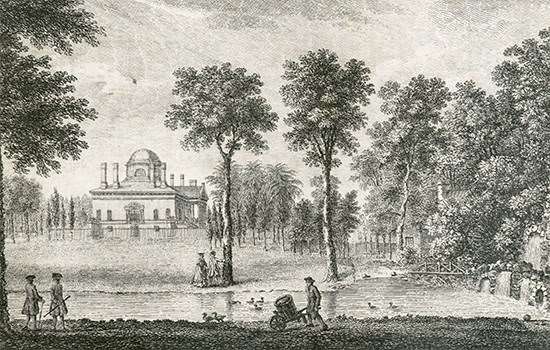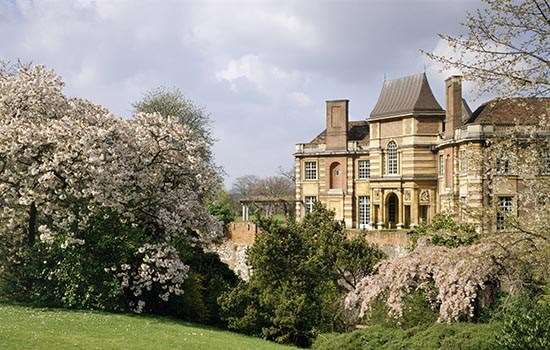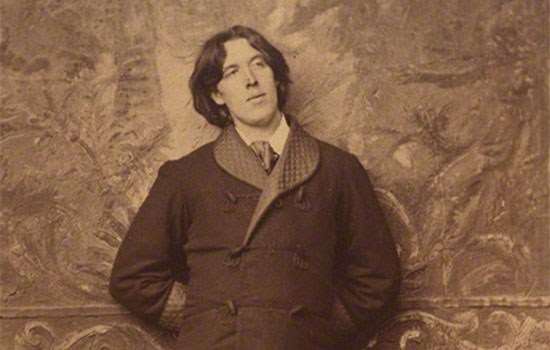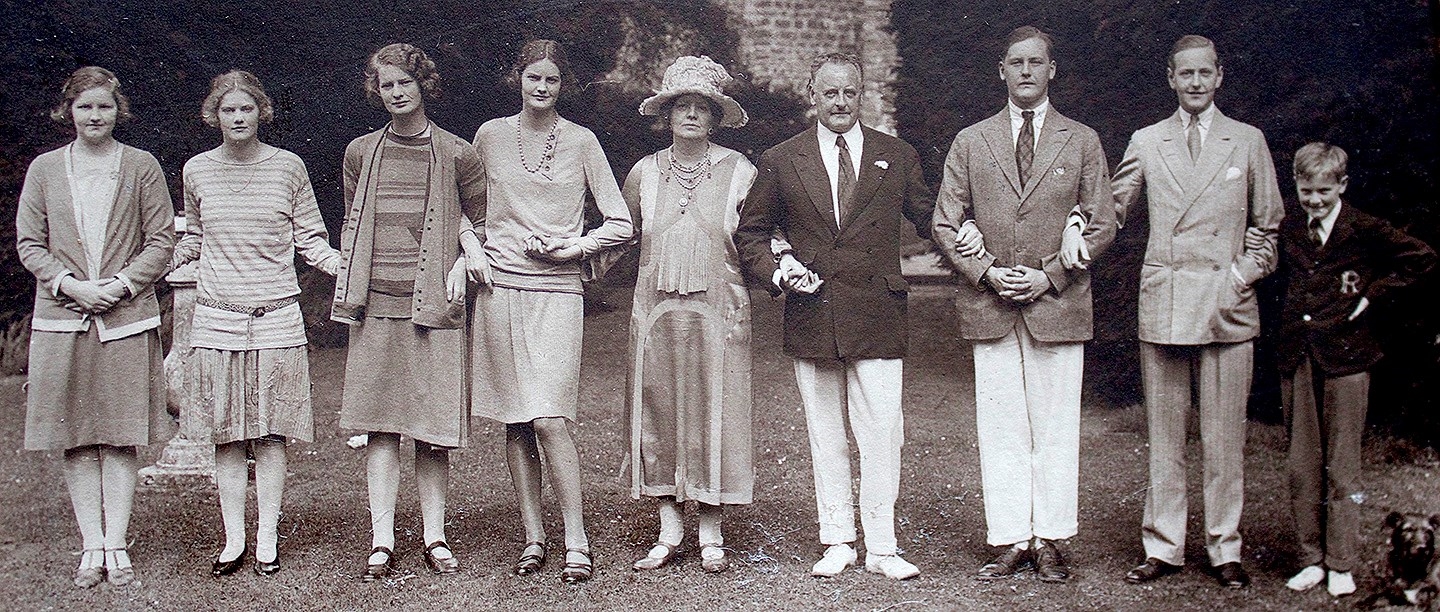Cabinet Minister and Family Man
Born in 1872, William Lygon was a well-known public figure from a young age. Succeeding his father as Earl Beauchamp in 1891, he became mayor of Worcester at the age of 23, and was appointed governor of New South Wales, Australia, in 1899. A high-flying figure in the Liberal Party, he rose to become a senior cabinet minister in 1910. He was also appointed First Commissioner of the Office of Works (later English Heritage), in charge of works to royal residences and government buildings.
In 1913, Beauchamp was appointed Lord Warden of the Cinque Ports. He enjoyed the pomp and ceremony that came with the role of Lord Warden: one of his duties was to welcome visiting foreign dignitaries at Dover on behalf of the king. Equally, however, he spent time at Walmer Castle with his family. In 1902, he had married Lettice Grosvenor, sister of Hugh Grosvenor, 2nd Duke of Westminster. Family photographs show Beauchamp, Lettice and their seven children enjoying their surroundings and each other’s company at Walmer.
Find out more about Walmer CastleParty Boy
Beauchamp’s family life appeared conventional. However, during the 1920s he is known to have thrown some rather racy parties at Walmer, to which he invited his high-class friends, along with local fishermen and youths. A hint of their nature is given in the memoirs of Lady Christabel Aberconway, who wrote that:
One Sunday, my host, Lord Jowitt, asked my husband if he and I would like to see one of the famous castles of the Cinque Ports. Delightedly we accepted. … We arrived [at Walmer] and were shown into a garden surrounding a grass tennis court. There was the actor Ernest Thesiger, a friend of mine, nude to the waist and covered with pearls.
Caught Out
In 1930 Beauchamp became embroiled in a scandal that would prove disastrous to his career and personal life. He had embarked on a round-the-world tour in August that year, spending two months in Sydney, Australia. He was accompanied by a young valet, who lived with him as his lover. This did not go unnoticed, and Beauchamp’s tastes were reported in the Australian Star newspaper:
The most striking feature of the vice-regal ménage is the youthfulness of its members … Rosy cheeked footmen, clad in liveries of fawn, heavily ornamented in silver and red brocade, with many lanyards of the same hanging in festoons from their broad shoulders, [who] stood in the doorway, and bowed as we passed in … Lord Beauchamp deserves great credit for his taste in footmen.
Following this report, Beauchamp’s brother-in-law, the Duke of Westminster, hired detectives and began to gather evidence of Beauchamp’s activities.
A Ruined Reputation
The Duke of Westminster was reported to be a bullying, womanising, angry man, once described as ‘nothing but a fatuous, spoilt, ageing playboy’. He had always disliked Beauchamp, jealous of his brother-in-law’s public office and apparent domestic happiness. In addition, the duke was a staunch Tory, whereas Beauchamp was the Liberal Party’s leader in the House of Lords. To ruin Beauchamp would not only satisfy Westminster’s personal vendetta, but would also be politically advantageous.
In 1931 Westminster publicly denounced Beauchamp as a homosexual to George V, who reportedly responded, ‘Why, I thought people like that always shot themselves’. Westminster insisted that Beauchamp be arrested, forcing him into exile.
Exile Abroad
Beauchamp fled first to Germany, where he contemplated suicide, but was dissuaded from it by his son Hugh. He later split his time between Paris, Venice, Sydney and San Francisco – four cities that were relatively tolerant of his sexual orientation.
Meanwhile, Westminster presented his evidence to his sister Lettice, who suffered a nervous breakdown at the news. She submitted a petition for divorce, moved to her brother’s Cheshire estate and took to her bed. The divorce petition described Beauchamp as:
A man of perverted sexual practices, [who] has committed acts of gross indecency with male servants and other male persons and has been guilty of sodomy … throughout the married life … the Respondent habitually committed acts of gross indecency with certain of his male servants.
Family Support
Westminster ordered Beauchamp’s children to testify against their father, but they all refused. Though his wife had deserted him, his children’s support never wavered. They shunned their mother and never made peace with her (except the youngest son, Dickie). Westminster became their worst enemy and he let it be known that anyone dealing with the Lygons would be dropped from society. In an extraordinary display of spite, Westminster wrote Beauchamp a short letter, simply stating:
Dear Bugger-in-Law, You got what you deserved. Yours, Westminster.
Cut off from the rest of society, Beauchamp’s children took turns to visit their father abroad. According to Beauchamp’s daughter Sibell, he never grumbled, nor mentioned Westminster again, but grew resigned to his exile.
Return and Reprieve
It was not until George VI came to the throne in 1936 that the warrant for Beauchamp’s arrest was lifted. Beauchamp returned to England in July 1937. He moved back to Madresfield, the family home, and wasted no time in painting out his wife’s image from a fresco in their personal chapel. The family threw her bust into the house’s moat.
Beauchamp died of cancer in 1938. His various misfortunes inspired Evelyn Waugh’s 1945 novel Brideshead Revisited – the character of Lord Marchmain was based on Beauchamp himself, while his son Hugh proved the inspiration for the ill-fated Sebastian Flyte.
Find Out More
-
Listen to our Podcast
In this episode of our podcast you can hear more about Lord Beauchamp and other LGBTQ+ people from the past who have connections to our properties or are commemorated through blue plaques.
-

'Romantic Female Friendship' and Chiswick House
Explore the life of Georgiana, Duchess of Devonshire, and the fashion for ‘romantic female friendships’ in 18th-century England.
-

The Partners: Seely and Paget
Discover the story of John Seely and Paul Paget, who ran one of the most noteworthy architectural firms of the interwar period, and completed their masterpiece at Eltham Palace in 1936.
-

London Pride: LGBTQ Blue Plaques
Discover the stories behind some of London’s famous LGBTQ residents, honoured today with a Blue Plaque, and how many of them challenged public perceptions of gender and sexuality.
